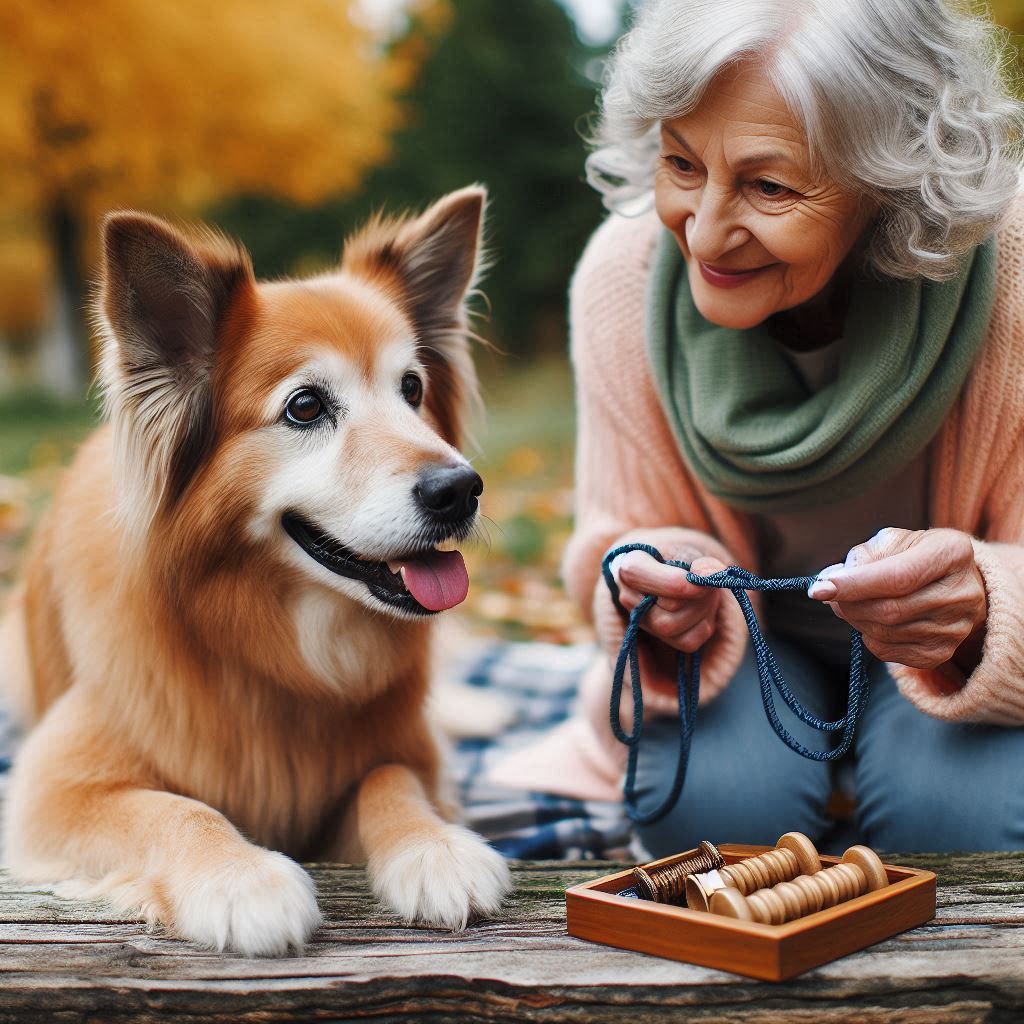
🐶 Training Senior Dogs: It’s Never Too Late
Share
🐶 Training Senior Dogs: It’s Never Too Late
There’s a myth out there that says, “You can’t teach an old dog new tricks.” Well, we’re calling that bluff.
Whether your pup is 7 or 17, it’s absolutely possible to train a senior dog—and doing so can dramatically improve their mental sharpness, confidence, and quality of life.
🧠 Why Training Matters for Senior Dogs
Just like people, dogs thrive on structure, interaction, and mental stimulation. Training provides all three. For senior dogs, it’s also a way to:
-
Keep their minds sharp
-
Strengthen your bond
-
Build confidence in a changing body
-
Help manage age-related behavior changes
🐾 Fun Fact: Cognitive enrichment can help delay signs of Canine Cognitive Dysfunction (doggy dementia).
✅ Training Tips for Older Dogs
1.
Adjust for Physical Limitations
Older dogs may have arthritis, hearing loss, or reduced eyesight. Tailor your training with these factors in mind.
-
Use hand signals if hearing is diminished
-
Train on soft surfaces for joint comfort
-
Keep sessions short (5–10 minutes is great!)
2.
Use Positive Reinforcement
Senior dogs respond beautifully to rewards. Use treats, praise, and gentle petting to encourage good behavior.
Avoid harsh corrections—older dogs, like younger ones, learn best through love and consistency.
3.
Focus on Practical Skills
While flashy tricks are fun, start with useful skills that improve their day-to-day comfort.
-
“Wait” at the door
-
“Touch” for gentle guidance
-
“Settle” for relaxation
-
“Come” or “Here” for recall during outings
4.
Incorporate Enrichment Activities
Mix training with fun to keep your senior dog engaged.
-
Nose work games
-
Puzzle toys
-
Gentle agility (like weaving through cones or walking over low poles)
-
Snuffle mats for slow, enriching mealtime play
5.
Be Patient with Progress
Older dogs may take a little longer to pick up new behaviors, especially if they’ve had years of doing things a certain way.
Stay calm, go slow, and celebrate every small win.
🩺 When to Involve Your Vet
Before starting a new training regimen with your senior dog, check in with your vet—especially if your dog has mobility or cognitive concerns. They can help tailor activities based on your dog’s health.
❤️ The Emotional Benefits of Senior Dog Training
Training isn’t just about obedience—it’s about connection.
Older dogs often go through big life changes: loss of hearing or sight, less energy, or new routines. Training gives them a sense of purpose, routine, and the comfort of bonding time with you.
“Old dogs can learn new tricks. And those tricks just might give them a whole new leash on life.”
🐾 Final Thoughts
Training a senior dog isn’t just possible—it’s powerful. You’ll unlock a happier, more confident companion while strengthening the bond that made you best friends in the first place. So grab some treats, take it slow, and start shaping your dog’s golden years today.
📚 Related Articles:
